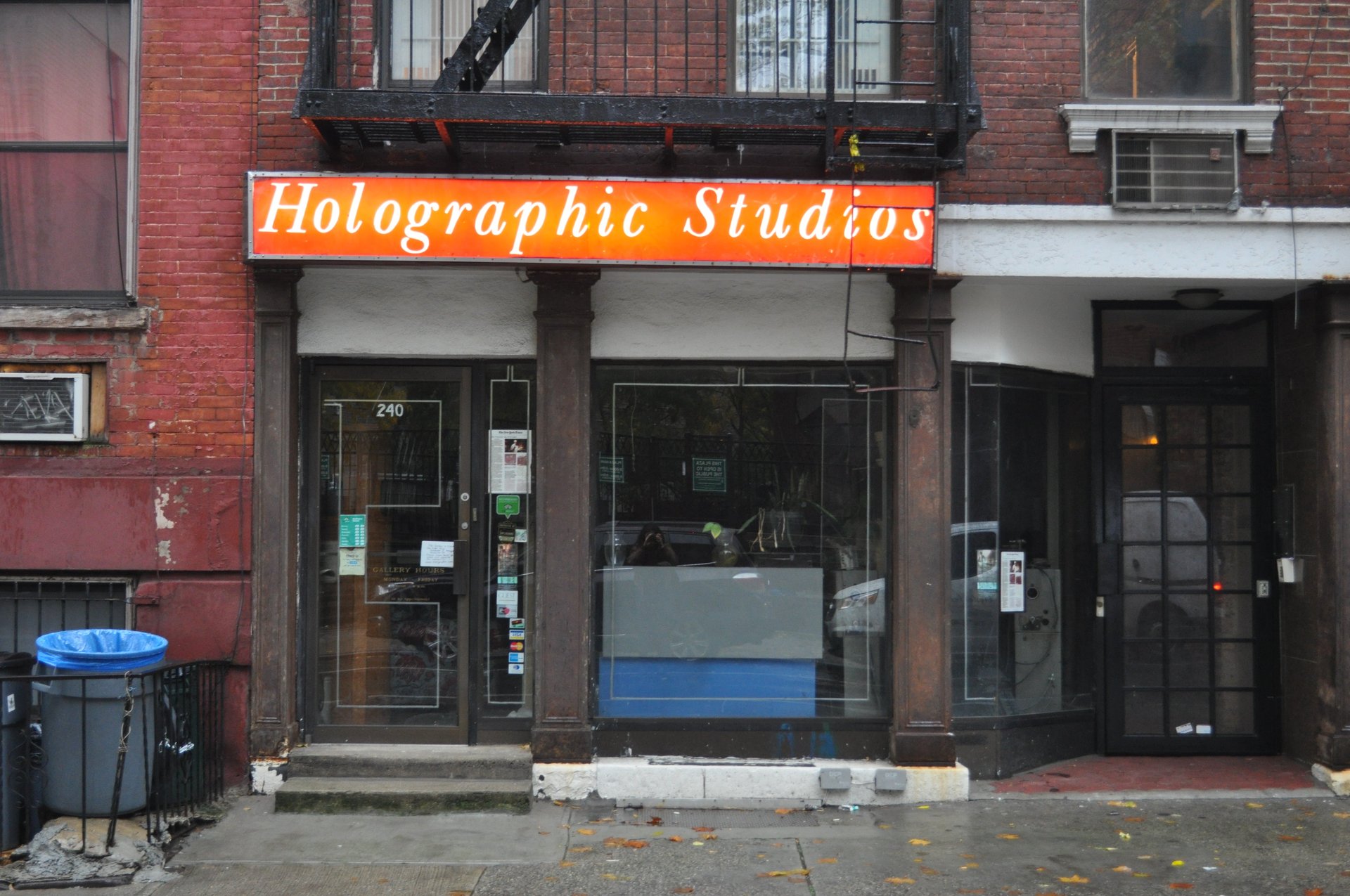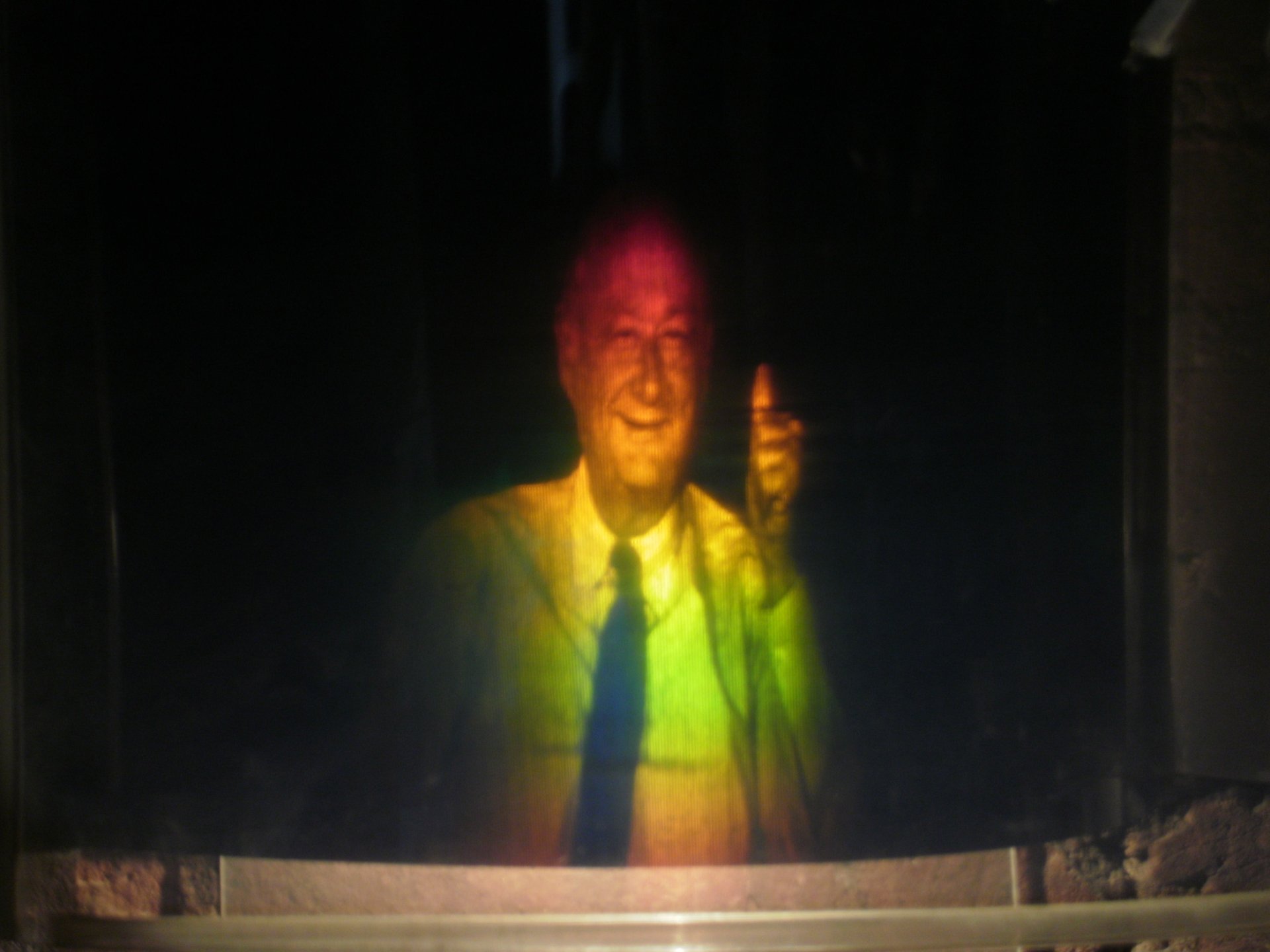Forget selfies and filters, this NYC shop captures your likeness with a hologram
If you need a hologram in New York City, Jason Arthur Sapan is your man.


If you need a hologram in New York City, Jason Arthur Sapan is your man.
Holograms are renderings of images—humans, objects—made to look 3D on a 2D surface. They’re those multi-colored images that seem to move as you shift your position, made when a camera captures the interfering waves of a split laser.
Holograms seemed like they were everywhere in the early 2000s because a number of companies in China and India started producing them at a rapid clip. Their ubiquity might have fallen off, but holograms are still popular. Sapan’s business, Holographic Studios, will celebrate its 40th anniversary in its current location, on Manhattan’s East side. In that time, Sapan has made holographic portraits of public figures from Andy Warhol to Bill Clinton, installations for museums or individual homes, for magazines, or for medical or scientific purposes. The business employs six people, Sapan says, and earns six figures per year in revenue.

“Whatever someone wants with holography, we’ll do. Have laser, will travel,” Sapan tells Quartz.
But making a hologram has its limitations. Typically, people have to be in Sapan’s studio to have their portrait made, and after it’s rendered there are only so many changes the team can make with software like Photoshop. Perhaps it’s not surprising that Sapan is enthusiastic about the kinds of business opportunities new technology might bring.
We caught up with Sapan about how Google and Adobe have transformed his business and self-driving cars, of all things, could help him make more money. The interview has been lightly edited for length and clarity.
In terms of technology, what’s the big thing you know today that you wished you knew when you started?
I wish I knew more coding. I think the singular most important thing in the 21st century is a good understanding of coding. Knowing how to code would would allow us to customize the holograms customize things beyond a software that already exists. This would give us a competitive advantage over the other person who is just simply going with the herd.
In terms of sales, we’d be able to do better data research for marketing. For our holograms, if there’s something we feel is weak in an image, we’d be able to not just Photoshop it, but three dimensionally alter its attributes—oh my god, it would be great! Then we could go back to images from the past and be able to adapt them to fit into this technology, which I think would be super cool.
Which tech giant has had the biggest impact on your business?
This is probably a funny kind of response, but I would say Google. Today, if someone is looking for something that is in our field, we’ll pop up, whereas in the past, they may never have found us. It has made a huge difference. When you come down to the bottom line, if no one knows we exist, we can’t be working, we can’t be selling, we can’t be creating.
What technology or tech service, that is not a giant company like Google or Apple, do you find is most useful in running your business?
Adobe gives us the most bang for the buck. It’s got a lot of different software, everything from Premiere where we will do video editing to Photoshop where we will do retouching. Their suite of software complements each other and works in a way that allows us to take whatever we’re doing and make it work a lot better.
From a technology standpoint, what can’t you do that you think you should be able to?
I think there’s some lack of flexibility in being able to really do some of the cloud activities that I would still envision as the next gen. I know with 5G, that’s about to change, because then everything becomes instantaneous. Where I can not just simply Skype with someone on the other side of the planet, but… somebody in Asia would be able to stand there in front of their phone and give us the data that would instantaneously be able to be used on this end of the call to create an image that is fully three-dimensional. That’s pretty amazing in my mind, and I don’t see that very far off.
What app on your phone do you find most useful for work?
Maybe Skype. I think people like to actually feel as though they’re seeing you sometimes, and where I can show them something in real time. A picture’s worth a thousand words, and a hologram is worth a thousand pictures.
What’s the newest competitive threat?
For a while it had been China. The Chinese had engaged in holography, but they did something I thought was counterproductive—they so flooded the market at such a low price that they actually destroyed their market. Rather than dominating it like we were in the early 2000s, they, in effect, shot themselves in the foot. They did destroy a lot of other holography businesses in the US, but they also destroyed themselves in the process. In the end, and please don’t look down on me for saying this, it was actually good for us because we had less competition.
Do you think the availability of self-driving cars might change your business?
Uber has already changed our business. If I’m going to a meeting, I know exactly when a car will be here, I’m not on the street waving my hand waving waiting for a yellow taxi. I can send a package and have someone at the other end wait to pick it up. I know where the car is. It’s not like leaps of faith like it used to be. Leaps of faith lead to uncertainty, uncertainty leads to anxiety, anxiety leads to loss of business. If people know something is gonna happen, they’re more likely to hire you do it. If they’re worried about it, by a factor of 10, they are far more unlikely to work with you.
Can you imagine using bitcoin or incorporating the blockchain in your business?
I would go blockchain, because I think it’s a better, more secure way of dealing with [customer transactions]. But, yeah, for clients who just want a secure methodology without having to pay the fees for wire transfers and everything else associated with the current banking system, I would use it as an alternative way of basically doing business. Bitcoin is the next point in the evolution of basically transferring money from one place to another in a safe, inexpensive manner.